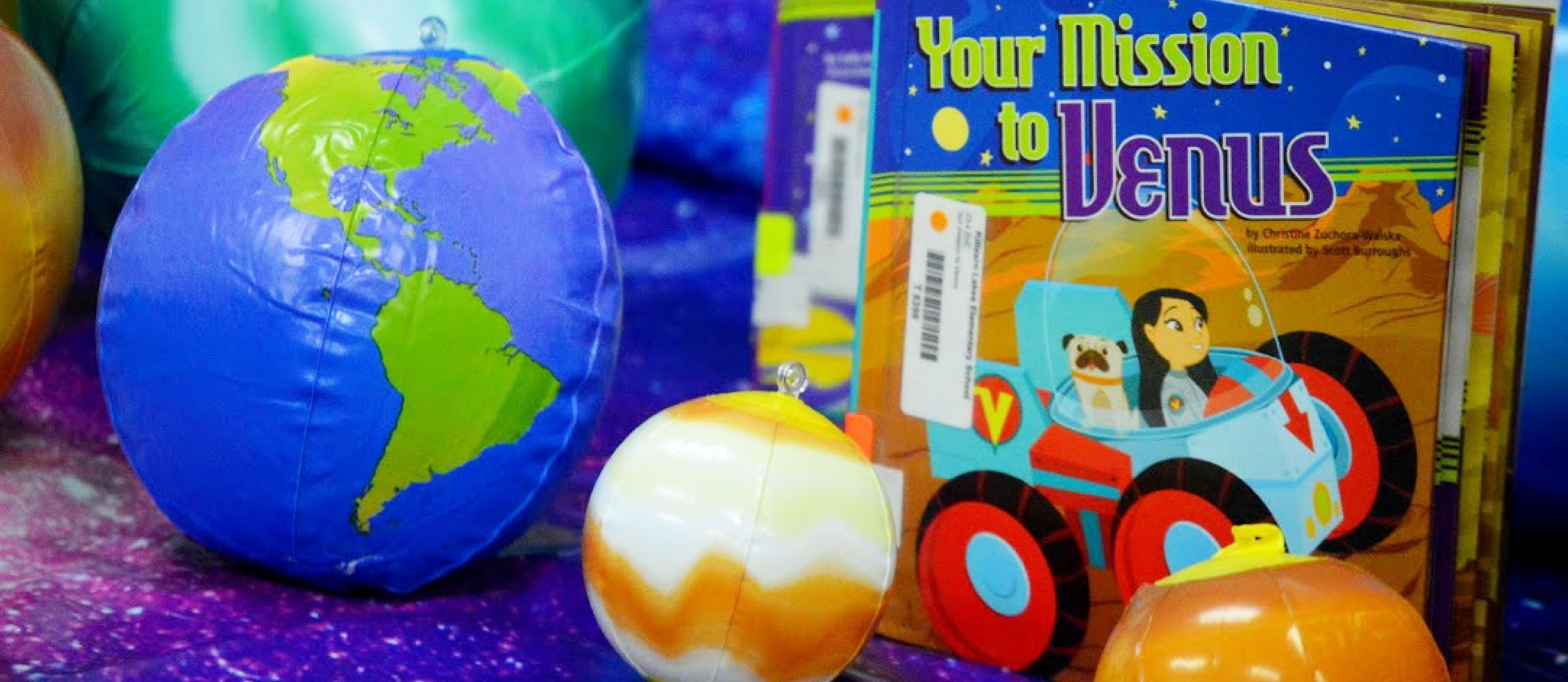Today we are blasting off for an adventure around our solar system. There’s so much to learn and explore! Encourage your students to get hands-on with these fun solar system activities.
Setting Up the Science Center To get started, I decorated our science center for the new space theme. The solar system space canopy went up in seconds and easily attached to the ceiling with paper clips. It is the perfect addition to our small little bulletin board and really adds some depth and fun! At the science center we add our vocabulary words as they are introduced. This is a great way to build vocabulary and encourage your students to use those scientific words in their writing. I just clip them onto the canopy using clothespins. The science center takes on many changes as I teach my space unit. Any demonstrations we do, like the moon phases (using a globe, ball and flashlight) I add to the center so my students can explore for themselves. This is a great way to encourage independent reasoning and critical thinking skills. I also love adding the science file folder games for my students to explore. They are so sturdy and easy to store when not in use. They offer a quick way to reinforce skills taught during science time. My two favorites for this unit are Day or Night & Moon Changes. Taking a Closer Look at Constellations We turned off our classroom lights and turned on the fun with these constellation flashlights. The students took turns guessing which constellation was being projected. Some were familiar and some we had to look up on the computer. Once the constellations were introduced, my students each chose their favorite. They researched the constellations using books and computer resources. They had to name three stars that appear in the constellation and then create their own version of the constellation using black construction paper and aluminum foil. They balled up small amounts of foil and glued them onto their papers to represent their stars. The Moon Landing There are so many unique ways to learn about the moon. Help your students understand our closest neighbor in space with a fun science lab. The craters on the moon are visible even from way down here on Earth. Have your students explore how the craters might have been made. Layer dirt, sand and flour into a pie tin. Have students take turns dropping marbles or golf balls into the pie tin. While they explore, explain to them that the moon does not have weather or wind like we do here on Earth. Therefore, when a crater is formed or footprints are left they are there forever. Ask your students what made these craters. Any ideas? After a little science fun have your students create their own moons using white tempera paint and some flour mixed in. Use a mini styrofoam balls to create craters in the paint. Journey Through Our Solar System Help your students to learn about our closest planets by taking a journey through the solar system. I set the stage for space exploration by incorporating the inflatable solar system. These colorful planets are set on a shelf in our room. There are some fun planet books to accompany them and my students are encouraged to explore. They are great for showing a size comparison for the planets, something even us adults struggle with comprehending. Each student chooses their own planet to research. Once their research is complete they break into the art supplies and get creative. I especially love the level of detail that my students include in their art work. You can actually see the rock in Saturn's rings! I hope a few of these ideas encourage you to get creative the next time you blast off to explore our solar system!


